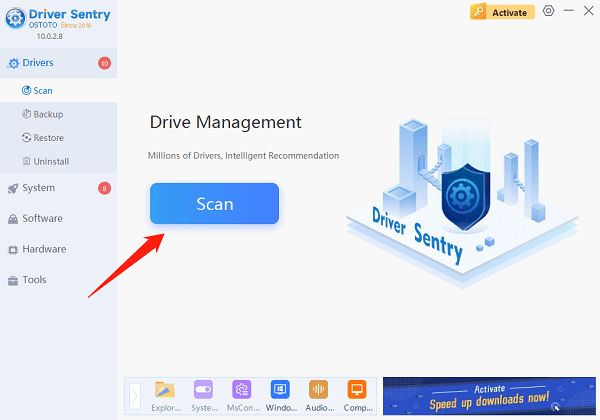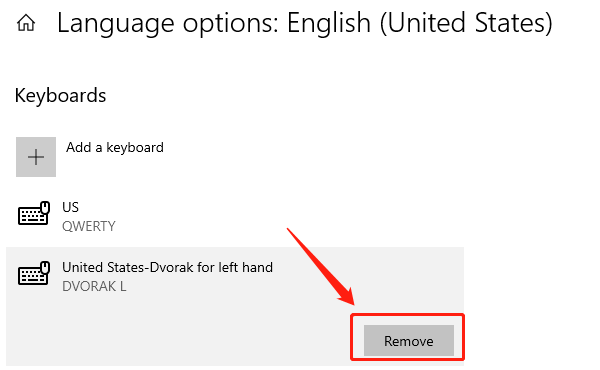
Occasionally in Windows 10, keyboard input may become abnormal or delayed. This article provides steps to reset your keyboard and restore functionality.
1. Update Keyboard Drivers
Corrupt or outdated drivers are common causes of keyboard issues. Updating the keyboard driver may resolve these problems. Using Driver Sentry is recommended for automatic driver detection and updates, saving time and avoiding errors with manual installations.
Download the latest version of Driver Sentry, install it, and open the software. Click "Scan".

After scanning, identify outdated or missing drivers in the results list. Find the keyboard driver and click "Upgrade".
Restart your computer to ensure the updated drivers take effect.
2. Restart Your Computer
Save all open files to prevent data loss.
Click the "Start Menu" > "Power" > "Restart".
After the restart, test your keyboard. If the issue persists, proceed to the next steps.
3. Reset Keyboard Settings
Press Win + I to open "Settings", then go to "Time & Language" > "Language".
Next to your current language, click "Options" and remove extra keyboard layouts, keeping only the default one.

Navigate to "Advanced Keyboard Settings" in Settings, select "Language Bar Options", and restore the default input method.
Open "Control Panel" > "Clock and Region" > "Language" > "Advanced Settings", and click "Restore Default Settings" to reset the system's keyboard configuration.
4. Check Keyboard Hardware
Clean the Keyboard:
Use a soft brush or air blower to remove dust and debris between keys.
For mechanical keyboards, consider removing keycaps for deep cleaning.
Test Connection Ports:
For wired keyboards, try plugging into a different USB port.
For wireless keyboards, replace the batteries and re-pair the device.

Test with Other Devices:
Connect the keyboard to another computer to check functionality. If the issue persists, the keyboard may be damaged and require replacement.
5. Run the Keyboard Troubleshooter
Press Win + I and go to "Update & Security" > "Troubleshoot".
Locate "Keyboard" and click "Run the Troubleshooter".

Allow the system to detect and fix any issues automatically.
Follow the on-screen instructions, restart your computer, and check if the issue is resolved.
Common Keyboard Issues and Solutions
Input Lag:
Ensure no other devices interfere with the keyboard connection (e.g., USB port issues).
Close unnecessary background programs to free up system resources.
Non-Responsive Keys:
Clean the keyboard and check if any keys are stuck or dirty.
Use an external keyboard or virtual keyboard to determine if the issue is hardware-related.
Mismatched Characters or Key Conflicts:
Verify input method settings are correct.
Check for enabled special keys or shortcuts (e.g., Caps Lock, language switch keys).
Follow the steps in this article to resolve keyboard issues on Windows 10. If the problem persists, contact professional support for help.
See also:
How to Fix WiFi Not Connecting to the Internet
6 Methods to Fix Wireless Network Adapter Disabled